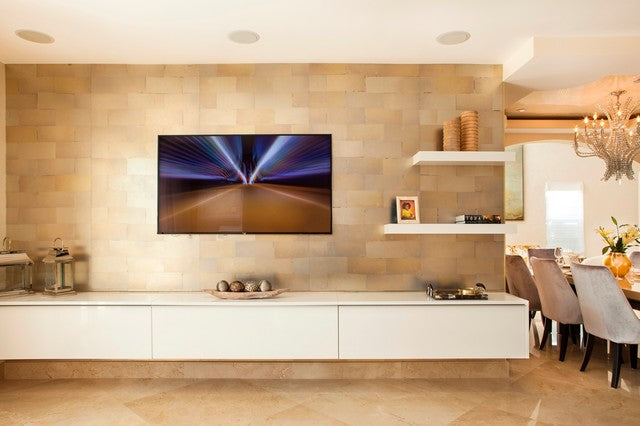- No products in the cart.
A FULL GUIDE TO ENTERTAINMENT TV WALL UNITS: DESIGNS, FEATURES, AND TIPS FOR YOUR HOME
27
Sep
Entertainment TV wall units are more than just a place to hold your television – they are the focal point of your living room, transforming it into a stylish and functional entertainment center. With the rise of smart TVs and home theater systems, TV wall units have evolved into a blend of design, practicality, and technology. In this comprehensive guide, we’ll explore everything you need to know about entertainment TV wall units, including different designs, materials, installation tips, and how to choose the right one for your space.
Introduction to Entertainment TV Wall Units
An entertainment TV wall unit serves multiple purposes. First and foremost, it houses your television, whether it’s mounted on the wall or placed on a shelf. Beyond that, wall units often provide storage space for media devices, gaming consoles, books, decor, and other home entertainment essentials. Over time, these units have evolved from simple TV stands into intricate and stylish structures that can truly elevate the aesthetics of a living space.
Entertainment wall units come in a variety of styles, from minimalist floating shelves to large floor-to-ceiling systems that dominate an entire wall. Each design offers unique features and advantages, depending on your living space, lifestyle, and personal preferences.
Types of Entertainment TV Wall Units
When shopping for an entertainment TV wall unit, you’ll quickly discover a wide range of styles, designs, and configurations. Here are the most popular types of entertainment wall units:
- Traditional TV Wall Units
Traditional TV wall units are often large, freestanding structures made from materials like wood or MDF (Medium-Density Fiberboard). These units typically consist of a central section for the TV, with shelves and cabinets on either side for storing media devices, books, or decorative items. Traditional wall units often have a grand, classic appearance, making them suitable for homes with more ornate or traditional decor styles.
Key Features:
- Large, freestanding design
- Ample storage with cabinets and shelves
- Often made from wood or MDF
- Suitable for larger living rooms
- Modern and Contemporary TV Wall Units
Modern TV wall units are sleek, minimalist, and often designed to complement modern living spaces. These units focus on clean lines, a neutral color palette, and functionality. Materials like glass, metal, and high-gloss finishes are commonly used. Modern units may include open shelving, hidden storage, or even integrated lighting to enhance the aesthetic appeal.
Key Features:
- Sleek, minimalist design
- Clean lines and neutral colors
- Materials like glass, metal, and high-gloss finishes
- Often wall-mounted for a floating effect
- Floating TV Wall Units
Floating TV wall units are mounted directly on the wall, giving the illusion that the unit is “floating” off the ground. These units are perfect for smaller spaces, as they maximize floor space and create an open, airy feel. Floating units typically feature a combination of shelves and cabinets and may include hidden storage to keep cords and electronics out of sight.
Key Features:
- Wall-mounted design that saves floor space
- Sleek and minimalist appearance
- Ideal for small to medium-sized living rooms
- Hidden storage options for electronics and cables
- Modular TV Wall Units
Modular TV wall units offer flexibility and customization. These units are made up of multiple, interchangeable pieces that can be arranged to fit your space and needs. You can add or remove shelves, cabinets, and drawers as needed, creating a personalized entertainment center. Modular units are a great option if you want to customize your layout or if you plan to move and want a unit that can be easily adapted to a new space.
Key Features:
- Customizable and flexible design
- Multiple interchangeable pieces
- Can be adjusted to fit any room size or layout
- Ideal for growing families or renters
- Built-In TV Wall Units
Built-in TV wall units are a more permanent solution, as they are designed to blend seamlessly into the architecture of your home. These units are often custom-made to fit a specific wall or alcove and may include additional features like integrated lighting, sound systems, or hidden compartments. Built-in units are perfect for homeowners who want a cohesive and streamlined look.
Key Features:
- Custom-made to fit the space
- Seamless integration into the wall
- Often include custom features like lighting or sound systems
- Ideal for homeowners looking for a permanent solution
- Entertainment Centers with Fireplaces
Combining an entertainment center with a fireplace is a popular design trend that brings warmth and coziness to the living room. These units often feature an electric fireplace built into the center, with space above for the TV and shelving or cabinets on either side. The result is a multifunctional piece that serves as both a media console and a focal point for the room.
Key Features:
- Electric fireplace integrated into the design
- Combines warmth and entertainment in one unit
- Available in modern, traditional, and rustic styles
- Ideal for creating a cozy, inviting atmosphere
Materials and Finishes
Entertainment TV wall units are available in a wide variety of materials and finishes, each offering a unique look and feel. The material you choose will depend on your personal style, budget, and the overall aesthetic of your home. Below are some of the most common materials used in TV wall units:
- Wood
Wood is a classic material for TV wall units and is available in a range of finishes, from natural oak and walnut to painted or stained versions. Wooden units offer a warm, traditional feel, and they are often used in larger, more ornate designs. Solid wood units tend to be more expensive but are also more durable.
Pros:
- Durable and long-lasting
- Available in various finishes and stains
- Warm, natural aesthetic
Cons:
- Can be expensive (especially solid wood)
- Heavier and more difficult to move
- MDF (Medium-Density Fiberboard)
MDF is a cost-effective alternative to solid wood, offering a similar appearance but at a lower price point. MDF is made from wood fibers that are compressed and bonded together, making it more affordable and lightweight. MDF units are often finished with veneers or laminate to mimic the look of real wood.
Pros:
- Affordable and lightweight
- Available in a range of finishes
- Resistant to warping
Cons:
- Not as durable as solid wood
- Can chip or scratch over time
- Metal
Metal is commonly used in modern and industrial-style TV wall units. Steel, aluminum, and other metals are often used for frames or accents, providing a sleek, durable look. Metal units are ideal for contemporary or minimalist spaces and can be combined with glass or wood for added texture.
Pros:
- Durable and sturdy
- Sleek, modern appearance
- Works well with industrial or minimalist decor
Cons:
- Can be cold or harsh in appearance
- Limited color and finish options
- Glass
Glass is often used in modern or contemporary TV wall units, either as shelving or as part of the overall design. Glass shelves can give a floating, airy look, while glass doors on cabinets can help display items while keeping dust at bay. However, glass is more fragile than other materials, so it may not be suitable for households with young children or pets.
Pros:
- Sleek, modern aesthetic
- Creates a light, open feel
- Ideal for displaying decorative items
Cons:
- Fragile and prone to breaking
- Requires frequent cleaning to avoid smudges
- Laminate and Veneers
Laminate and veneer finishes are popular choices for budget-friendly TV wall units. These finishes are applied over MDF or particleboard to mimic the appearance of wood, metal, or other materials. While laminate and veneer units can look great, they are generally less durable than solid wood or metal options.
Pros:
- Affordable and lightweight
- Available in a wide range of styles and finishes
- Easy to clean and maintain
Cons:
- Less durable than solid materials
- Can chip or peel over time
Choosing the Right TV Wall Unit for Your Space
Selecting the right entertainment TV wall unit depends on a number of factors, including the size of your living room, your TV, storage needs, and personal style. Here are some tips to help you choose the perfect unit for your home:
- Measure Your Space
Before you start shopping for a TV wall unit, it’s essential to measure the space where you plan to place the unit. This includes the width, height, and depth of the wall, as well as the size of your TV. Be sure to leave enough space for any additional decor or furniture around the unit.
- Consider Your Storage Needs
Think about how much storage you need for media devices, gaming consoles, DVDs, books, and other items. If you have a lot of electronics, look for a unit with ample shelving, drawers, or cabinets to keep everything organized. Floating units with hidden storage are a great option for keeping cables and electronics out of sight.
- Match Your Decor Style
Your TV wall unit should complement the overall decor of your living room. If you have a modern, minimalist space, opt for a sleek, floating unit with clean lines. For a traditional or rustic home, a wooden unit with ornate details may be more appropriate. Consider the materials, colors, and finishes that will best suit your space.
- Think About the Future
If you’re planning to upgrade your TV or move to a larger space in the future, consider choosing a modular or adjustable TV wall unit that can grow with your needs. Modular units allow you to add or remove pieces as needed, making them a versatile choice for changing lifestyles.
- Don’t Forget Cable Management
Cable clutter can ruin the look of even the most stylish TV wall unit. Look for units with built-in cable management systems or hidden compartments to keep cords and wires out of sight. This will create a cleaner, more organized look in your living room.
Installation Tips for TV Wall Units
Once you’ve chosen the perfect TV wall unit, proper installation is key to ensuring it looks great and functions well. Here are some tips for installing your TV wall unit:
- Use a Stud Finder
If you’re mounting your TV wall unit directly to the wall, use a stud finder to locate the wall studs for secure installation. Anchoring the unit to the studs will provide more support and prevent the unit from falling over time.
- Get Professional Help for Large Units
If you’ve purchased a large, heavy wall unit, it’s a good idea to hire a professional for installation. They can ensure that the unit is properly anchored to the wall and that all components are securely attached.
- Check Weight Limits
Before placing your TV or other heavy electronics on the unit, double-check the weight limits for each shelf or component. Overloading shelves can lead to damage or even collapse, so be sure to follow the manufacturer’s guidelines.
- Use a Level
When mounting the unit or installing shelves, use a level to ensure that everything is straight. A crooked wall unit can be distracting and may cause items to slide off over time.
- Hide Cables and Wires
To keep your entertainment area looking clean and organized, use cable ties or cord covers to bundle and hide cables. Many TV wall units come with built-in cable management systems to help with this.
The Importance of Proper Layout and Placement
When it comes to selecting and installing a TV wall unit, one of the most crucial aspects to consider is the layout and placement within your living room. A poorly positioned unit can disrupt the flow of the space, reduce functionality, and even affect your viewing experience. Here’s how to plan the best layout for your entertainment center, ensuring both aesthetic appeal and practicality.
- Focal Point of the Room
Your entertainment TV wall unit will likely become the focal point of the room, so it’s important to position it accordingly. If your living room has a natural focal point, like a fireplace or a large window, you’ll need to decide whether you want the TV wall unit to complement that feature or take center stage. In rooms without an obvious focal point, the TV unit can become the anchor that brings the space together.
In many modern homes, the TV has become the primary feature of the living room, so it’s common for TV wall units to be placed centrally along the main wall. However, the placement should be balanced with other furniture and the room’s layout. For instance, if your sofa is off-center, you may need to adjust the placement of the TV unit accordingly to create a cohesive arrangement.
- Viewing Distance and Height
The ideal viewing distance from the television depends on the size of the TV and the resolution. For example, with a 4K television, you can sit closer without noticing the pixels, whereas an HD television requires a bit more distance for optimal viewing. A general rule of thumb is to place the seating area about 1.5 to 2.5 times the diagonal screen size of the TV. For example, if you have a 55-inch TV, the seating should be around 6.9 to 11.5 feet away.
The height of the TV unit is also essential. The center of the TV screen should be at eye level when seated. If the TV is too high or low, it can cause neck strain or discomfort over time. If you're wall-mounting the TV, measure the height carefully to ensure comfortable viewing. Many wall units have adjustable mounts or shelving that can help with achieving the perfect height.
- Room Lighting Considerations
Lighting plays a significant role in creating an optimal viewing experience and enhancing the look of your entertainment TV wall unit. Too much natural light can cause glare on the screen, making it difficult to enjoy movies or games, while insufficient lighting can strain your eyes.
If your living room has large windows, you may want to avoid placing the TV directly opposite them, as this will maximize glare. Instead, position the TV wall unit perpendicular to the windows, or invest in blackout curtains or blinds to control the light levels. Additionally, consider incorporating built-in or adjustable lighting into the TV unit itself. Many modern TV wall units come with LED lighting that can provide ambient light without causing reflections on the screen.
- Furniture Arrangement Around the TV Unit
To create a comfortable and functional living space, the furniture arrangement around the TV wall unit is key. Start with your seating area, making sure it’s placed at an ideal distance and angle from the TV. Sectional sofas or recliners work particularly well in larger living rooms, allowing multiple people to view the screen comfortably.
In smaller living rooms, be mindful of how the TV wall unit interacts with other pieces of furniture. Consider using modular or floating units to create an open and uncluttered space. Coffee tables, side tables, and shelving should complement the TV unit rather than compete with it. Additionally, ensure that there’s enough walking space around the room so that traffic flow isn’t impeded.
- Cable Management and Concealment
Cable clutter can be an eyesore in any entertainment setup. Whether you have multiple media devices, gaming consoles, or sound systems, the accumulation of wires can detract from the sleek appearance of your TV wall unit. To maintain a clean and organized look, opt for a unit that includes built-in cable management systems, such as channels, compartments, or cable holes.
Wall-mounted floating TV units often come with hidden sections for routing cables, keeping them out of sight. You can also use cord covers, cable ties, or raceways to bundle and conceal wires. Be sure to plan ahead if you’re adding multiple devices, as it’s easier to route all the cables at once rather than retrofitting solutions later on.
Customization Options for TV Wall Units
One of the greatest advantages of modern entertainment TV wall units is the level of customization available. From tailored materials and colors to unique features like lighting and integrated sound systems, you can create a unit that perfectly matches your home and lifestyle.
- Choosing the Right Finish
The finish of your TV wall unit is a critical element in ensuring it complements the overall style of your living room. The finish can range from high-gloss lacquer to matte wood grain, and each option will create a different visual impact.
- Wood finishes provide warmth and can work well in traditional or rustic spaces. Walnut, oak, and cherry are popular choices for their natural grain and texture. Stained finishes can give the wood a darker or richer appearance.
- High-gloss finishes are common in modern and contemporary designs, offering a sleek, reflective surface that catches the eye. These finishes are often available in black, white, or bold colors, creating a dramatic, polished look.
- Matte finishes offer a more understated and sophisticated appearance. Matte white or black can look striking without being too overpowering, and they tend to show fewer fingerprints and smudges than glossy finishes.
- Integrated LED Lighting
Many entertainment TV wall units now come with integrated LED lighting, providing both ambiance and functionality. LED strips or spotlights can be installed behind shelves, under cabinets, or around the TV frame itself. This indirect lighting creates a warm glow and enhances the visual appeal of the unit, especially in the evening.
LED lights can also be useful for practical purposes, such as illuminating shelves where you store media devices or decorative items. Some units allow you to change the color and brightness of the lights, adding a customizable and dynamic element to your living room setup.
- Sound Systems and Speakers
If you’re a home theater enthusiast, you may want to consider incorporating a sound system into your entertainment TV wall unit. Many modern units have built-in compartments or shelves specifically designed to house speakers, soundbars, and subwoofers. This ensures that your sound system is integrated seamlessly into the unit, without compromising on design or aesthetics.
For those seeking a truly immersive audio experience, some units even come with built-in surround sound systems. These units are designed to distribute sound evenly throughout the room, creating a theater-like experience without the need for visible speakers or external wiring.
- Personalizing with Accessories
Your TV wall unit doesn’t have to be purely functional – it can also be a reflection of your personal style. Use the shelves and open spaces to display artwork, family photos, plants, or collectibles. Adding personal touches will help soften the appearance of the unit and make the living room feel more inviting and lived-in.
Additionally, consider using decorative baskets or storage boxes to keep remotes, DVDs, or other small items organized and out of sight. These small touches can make a big difference in maintaining an organized and aesthetically pleasing entertainment center.
The Future of TV Wall Units: Smart Integration and Technology
As technology continues to evolve, so do entertainment TV wall units. Smart homes are becoming increasingly popular, and TV units are now being designed with smart integration in mind. Here are some of the latest trends and innovations shaping the future of entertainment units:
- Voice-Controlled Entertainment Centers
With the rise of virtual assistants like Amazon Alexa, Google Assistant, and Apple’s Siri, voice control is becoming a standard feature in many households. TV wall units can now be equipped with voice-activated controls, allowing you to turn on your TV, adjust the volume, or switch between streaming services without ever reaching for a remote.
Voice-controlled units can also be connected to other smart home devices, such as lighting, speakers, and thermostats, creating a fully integrated and seamless entertainment experience.
- Smart TV Mounts and Adjustments
Innovative TV mounts are being developed that allow for motorized adjustments, making it easy to tilt, swivel, or rotate the TV with a remote or voice command. This is especially useful in large living rooms or open-concept spaces, where you may want to adjust the TV’s angle based on where you’re sitting or standing.
Some smart mounts also feature automatic adjustments based on the time of day or ambient light levels, ensuring that your TV is always positioned for optimal viewing.
- Augmented Reality and Virtual Design Tools
As online shopping for furniture continues to grow, augmented reality (AR) and virtual design tools are being used to help customers visualize TV wall units in their homes before making a purchase. These tools allow you to upload a photo of your living room, then digitally “place” the unit in the room to see how it fits and looks with your existing furniture.
AR tools can also help you experiment with different sizes, finishes, and configurations, making it easier to customize the perfect unit for your space.
- Sustainability and Eco-Friendly Materials
Sustainability is becoming an important factor in furniture design, and TV wall units are no exception. Many manufacturers are now offering units made from eco-friendly materials, such as reclaimed wood, bamboo, or recycled metal. These materials not only reduce environmental impact but also add a unique and rustic touch to the design.
Additionally, some units are designed with energy efficiency in mind, incorporating LED lighting or using low-VOC (volatile organic compound) paints and finishes to minimize harmful emissions.
Conclusion
An entertainment TV wall unit is more than just a place to store your TV – it’s a multifunctional piece of furniture that can enhance both the aesthetics and functionality of your living room. Whether you’re looking for sleek modern designs or traditional wooden units, the wide variety of options ensures that there’s something to suit every style and budget.
By considering factors like storage, materials, layout, and smart technology, you can create an entertainment center that not only showcases your TV but also reflects your personal style. From hiding cables to integrating surround sound systems, the possibilities for customization are endless.
As you explore the latest trends in TV wall units, from voice control to eco-friendly materials, you’ll discover that these units are no longer just furniture – they are becoming essential components of the modern, connected home. So, whether you’re binge-watching your favorite series, hosting a movie night, or simply relaxing with family, a well-designed TV wall unit can transform your entertainment experience.













